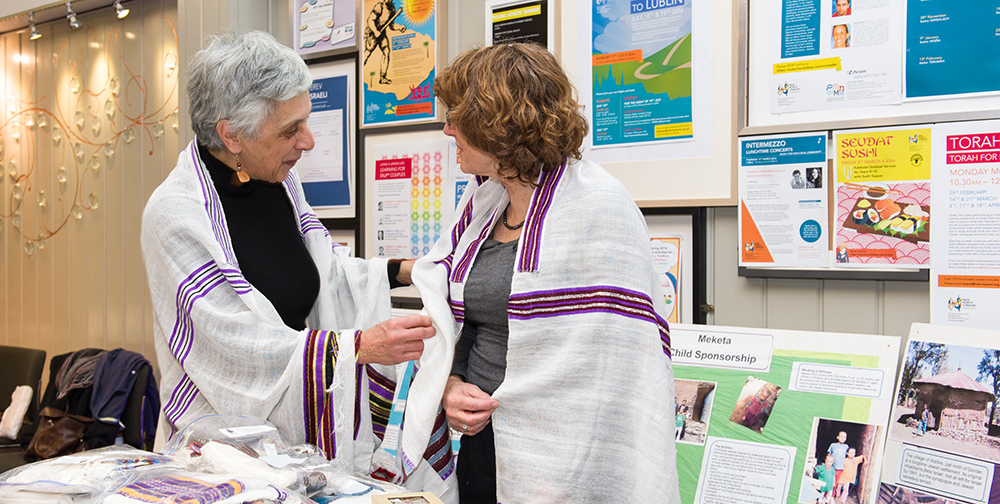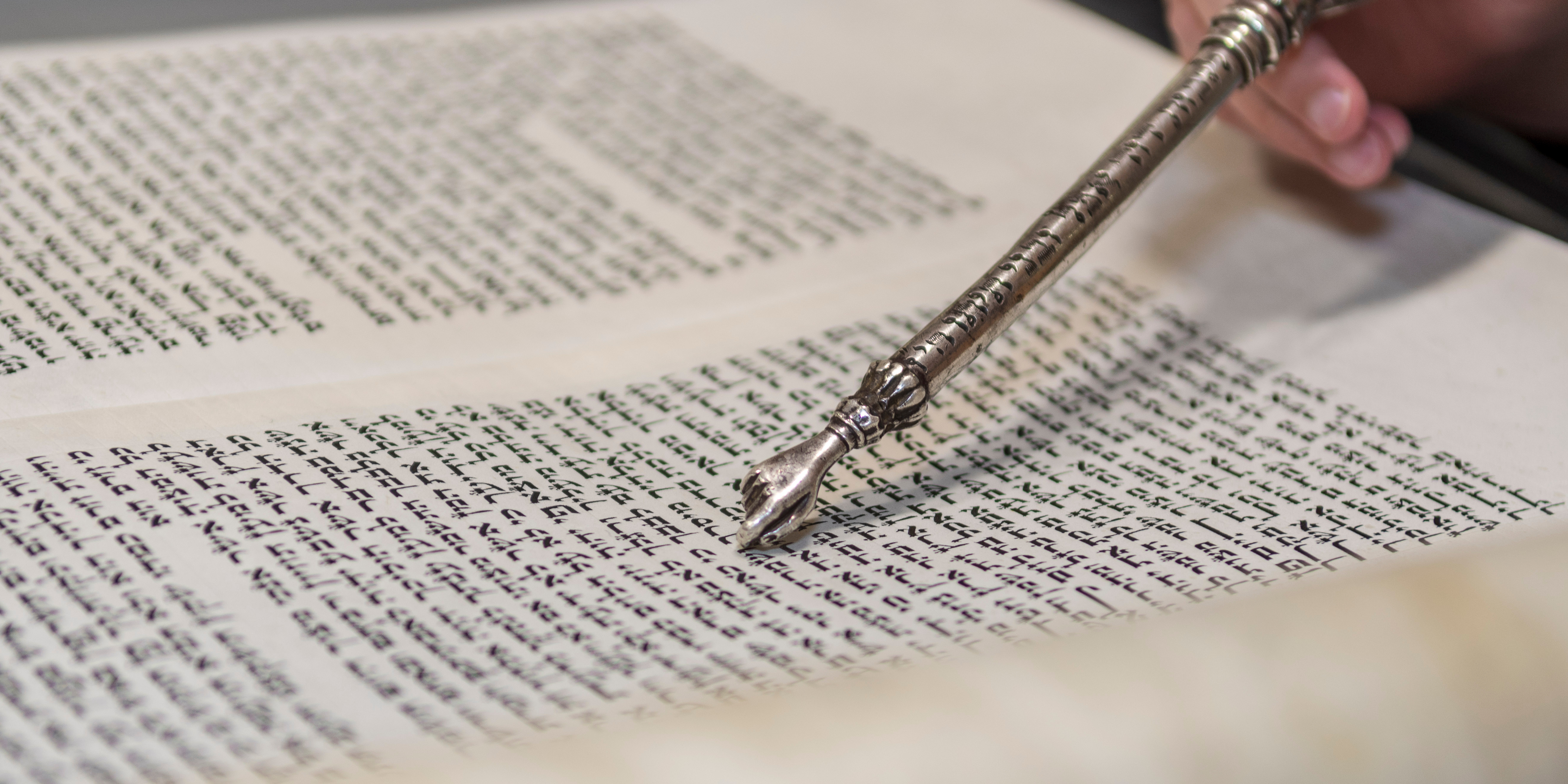Music on Shavuot

As a Cantor in love with liturgical music, the Shalosh Regalim (the three ‘foot’ festivals) are always especially interesting to me. In addition to the chanting of Shir Hashirim on Pesach, Ruth on Shavuot and Kohelet on Sukkot, there are also various musical ‘excursions’ during the festival services that we would not otherwise expect or hear on Shabbat, or an ordinary weekday. For example we add Hallel to our Shacharit service and it is common to hear echos of tunes we associate with a particular festival such as “Adir Hu” for the first 4 verses of Ps.118 on Pesach. This kind of echo is known as “Niggun d’yoma” (the melody of the day) and it helps to firmly establish us, musically and liturgically, in the Jewish calendrical cycle.
On Shavuot, in addition to the aforementioned Megillat Ruth and Hallel, there are also two lesser known liturgical additions. The first of these – Akdamut – is a ninety verse piyyut (liturgical poem) composed by Rabbi Meir Ben Isaac in the 11th Century. This mystical (largely alphabetical) Aramaic acrostic keeps a strict pattern of ten syllables to each verse and one rhyming structure (“tah”) that runs through the entire ninety verses. It is a symbolic gesture on our part, asking permission from G-d to read the Ten Commandments, and, fittingly for Shavuot, it deals with “…the indescribable greatness of the Creator, the excellence of the Torah and the future hope of Israel”.
Akdamut is read on the first day and was historically inserted after reading the first pasuk (verse) of Torah. It originally served as an introduction to the Targum, which was a way to make the Torah reading more accessible to the general public who spoke the vernacular of the time – Aramaic. The tradition developed such that a M’Turgaman (professional translator) would interweave an Aramaic translation/interpretation of the Hebrew text, alternating a line of Torah and a line of Targum. In this way, the people could access the public Torah readings and their “sacred heritage” more effectively. All that now remains of the tradition of oral Targum is this piyyut (and also the second piyyut discussed below) but later halachic authorities objected to its placement, claiming it was an interruption to the Torah reading. Nowadays it is either read before the first person is called to the Torah or after the call-up and before s/he recites the bracha.
Akdamut is also musically key for Shavuot. Its specific melody can be heard in many other liturgical moments throughout the festival and therefore it is the accepted “niggun d’yoma” for Shavuot. In fact Akdamut has three musical possibilities, one of which has fallen into obscurity. Of the remaining two, one is a psalmodic chant which is usually heard during the recitation of the festival Kiddush, the other is a metrical tune sometimes applied during Hallel, at the “niggun d’yoma” moments. The psalmodic chant mode can also be heard in many Ashkenazic communities on Simchat Torah when it is used to summon the Chatan Torah and Chatan B’reishit to the Torah. Obviously the symbolism of this musical “leitmotif” can hardly be ignored – as it connects Shavuot (the celebration of receiving the Torah) with Simchat Torah (the celebration of its renewed cycle). In terms of practical application the piyyut is chanted in a call and response fashion: Chazzan followed by the congregation. Depending on the service leader, one may hear either the psalmodic chant, the metrical tune, or a mixture of both.
The second of these musical additions is a shorter piyyut known as Yetsiv Pitgam. This acrostic is generally attributed to Rabbi Jacob Ben-Me’ir (a.k.a. Rabbeynu Tam), who is a grandson of Rashi and lived in 12th Century France (although there are some who argue different authorship). Recited by the haftarah reader on the second day of Shavuot rather than the first, its placement mirrors the original (now extinct) placement of Akdamut since it is inserted after the reader chants the first pasuk of the haftarah. As with Akdamut, it served as an introduction to the Targum and is now one of the few remnants of this ancient system (as discussed above).
Just like Akdamut, Yetsiv Pitgam presents a strict metrical structure, where the second and fourth word of each line rhyme and every line ends with the syllable “een”. It too is a mystical poem and bears many thematic similarities to Akdamut, and, similarly to Akdamut, Yetsiv Pitgam has a couple of distinct musical possibilities. The first is a set of four motifs (musical phrases) that are reminiscent of the nusach for Birkat Ha’Shofar (the blessing we say before blowing the Shofar on Rosh Hashanah). The second is an entirely different musical tradition. While the first is a major, triumphant sound (perhaps chosen to emphasise the sanctity of the day), the second is in the “Jewish” musical mode of Ahava Raba (also known as Freygish). It is much gentler and it closely resembles the famous Hebrew-Yiddish folk song “A Dudele”.
I have heard many congregants ask, “How are these older piyyutim relevant to the modern Jew who speaks almost no Hebrew and absolutely no Aramaic?” To this I respond: as a part of our ancient liturgical tradition they are valuable in and of themselves. But, with Shavuot fast approaching, I draw attention to them specifically, not only because they are musically rich and textually beautiful but because of what they represent.
Shavuot is the time to remember the giving of the Torah and our tradition teaches us that every Jewish soul was present to receive the Torah personally. At a time when we are so focused on the role of Torah in our lives, these fragments of our ancient prayer tradition remind us that those who preceded us took the time to build into their Torah readings a vernacular translation so everyone could clearly understand its sacred message. These two piyyutim, despite their anachronistic presence in our liturgy, serve to remind us that it is vital to find ways to engage every Jewish soul in Torah, no matter who they are or what their background is. Since Torah is our most precious gift from G-d, not only should we treasure it, but we should endeavour to share it widely thereby enabling others to benefit from its wisdom. A Chag Sameach to all those who enter our services this coming Shavuot and may each person feel welcome and at home in our houses of prayer and study.
Rebecca Blumenfeld is ordained as a Chazzan with a Masters in Jewish Studies from Hebrew College.



